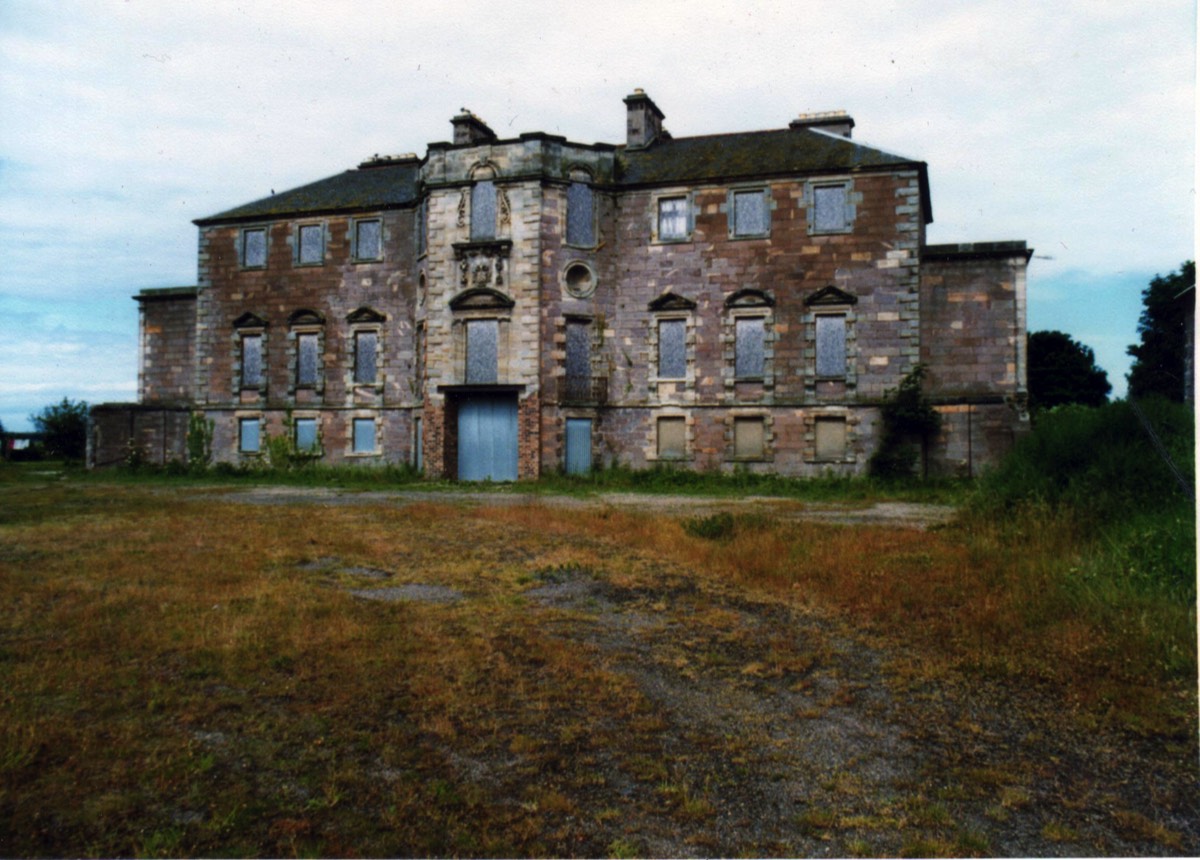Military Camps In East Lothian
Few large scale military camps were sited in East Lothian, apart from those at the airfields and Amisfield Park, Haddington. A small unit was stationed at the strategically important communications hub at Dunglass Bridge. However, this did not prevent the military from requisitioning any number of the County’s fine mansions, large houses and a considerable number of hotels all over the county. In addition many private houses were used as billets for troops and airmen.
Large County Houses
The following were used by the Military Authorities at one time or another during the war:

Archerfield House (long after the war).
Archerfield House
Belhaven Hill
Biel House
Broxburn House
Caponflat House
Clerkington House
Coulston House.
Gosford House
Herdmanston House
Kilduff House
Lennoxlove House
Luffness House
Morhamburn
Newbyth House
Newton Hall
Ormiston Hall
Saltoun Hall
Stevenson House
St Germains
Tyninghame House
West Garleton House
Whittingehame House
Yester House
Belhaven Hill
Biel House
Broxburn House
Caponflat House
Clerkington House
Coulston House.
Gosford House
Herdmanston House
Kilduff House
Lennoxlove House
Luffness House
Morhamburn
Newbyth House
Newton Hall
Ormiston Hall
Saltoun Hall
Stevenson House
St Germains
Tyninghame House
West Garleton House
Whittingehame House
Yester House
- Used by the army and as a Polish Billet.
- Requisitioned as an S.O.E Training School.
- Camp on the estate used by the Sherwood Forresters.
- Used by evacuees and the army.
- In Haddington. Used by the Poles and no longer standing.
- Used by a searchlight battery.
- Used by evacuees and its outbuildings used as a camp by RAF for SLG 27.
- In 1940, Gosford House was taken over by the War Office for use as a billet for troops. The King’s Own Scottish Borderers spent a considerable period of time at Gosford and many huts were erected to house the large numbers of men based there. The K.O.S.B were part of 155th Brigade, 52nd Division, which also included the 7th/9th Royal Scots. The latter also spent many months in the Gullane area. Later, Polish troops were also housed in Gosford House and Estate, which was also used by the army (e.g. K.O.S.B) and as a Polish Officers’ mess.
- In Saltoun. Used by a searchlight battery and so badly damaged by Poles that it was deemed uninhabitable and was demolished after the war.
- Used by the WAAFs as a billet.
- Officers’ Mess.
- Used by evacuees and the army, which has a camp in the estate.
- Use by Sherwood Forresters as a billet.
- Used by the army as a convalescent home and by the Red Cross.
- In Gifford. No longer standing but used as a billet by a searchlight battery.
- Accidentally burnt down by Polish soldiers.
- Used by the Land Army and as a Sick Bay for soldiers.
- Officers’ Mess for Amisfield Camp.
- RAF HQ for RAF Macmerry and used by WAAFs.
- Used by the army and Poles.
- Army Signals HQ for the area.
- Used as a school for Jewish refugees.
- Used by evacuees and an army transport unit, which used the stable block.
Hotels
The Belhaven, Albert, Hillside, Royal, Roxburghe and Bayswell hotels in Dunbar were all used as accommodation by Cadets in the local Officer Cadet Training Unit. In North Berwick the military used the Marine Hotel among others. At one point the Marine was used as the H.Q. of the 1st Polish Regiment.
Churches
Any number of church halls, which were used as messes.
Private Homes
A large number of private homes were requisitioned for the duration of the war and used for housing troops and personnel involved in war work of all descriptions. Do you know of any?
HELP
Are you aware of any other hotel, Country House or private house used by the military? Please let me know by using the email link below.
West Garleton
By the car park below the Hopetoun Monument on Byres Hill is the concrete base of a building. Perhaps this is all that remains of one of the outbuildings of 155 Infantry Brigade’s H.Q. across the road in West Garleton House. J. D. Thomson , K.O.S.B. 52nd Division, has left the following account of the importance of this base in the early and difficult months of the war. He wrote:
“After a hectic week in France after Dunkirk the division returned to East Lothian in that momentous summer of 1940 when a German invasion seemed a distinct possibility. Hundreds of poles were hurriedly erected on the beaches and other flat areas to discourage enemy gliders and 155 Infantry Brigade H.Q. at West Garleton had the formidable task of co-ordinating defence plans with mobile units, Home Guard, artillery, etc., in the area.
Had the ‘balloon gone up’ the Nissen huts on the side of the hill at the monument would have been the nerve centre for the defence of the Lothians. Coded messages reached [them] daily indicating the suitability of weather, tides, etc., for the enemy. Any invaders would have had quite a welcome from machine-guns firing on fixed lines. Life at West Garleton had its lighter side. While officers enjoyed the comfort of the large farm house we other ranks had to make do with the more spartan conditions of the outbuildings. As conditions permitted we were known to ‘borrow’ the Brigade Commander’s large staff car (a Humber Snipe) to make the two mile trip to Haddington for a dozen or so fish suppers.”
J. D. Thomson.

